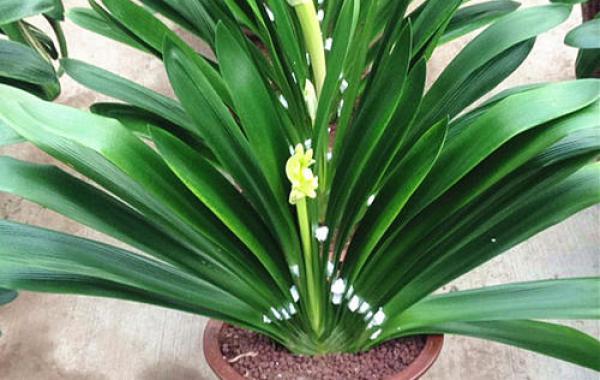What are the management methods of gentleman orchid in winter?

Many friends like to plant a few pots of orchids at home, but when winter comes, they will worry about what to do in winter. Today, the editor will introduce to you the management methods and skills of gentleman orchid in winter.
First, fertilizing Magnolia has the fastest vegetative growth rate in winter and needs the most nutrients. therefore, it is very important to apply winter fertilizer well. Before entering the room, flowerpots should be watered with bone powder, fried sesame, cooked soybeans or compound fertilizer every 15 to 20 days, and the roots can also be watered with soaking solution of animal and plant residues. It is necessary to ensure that the fertilizer is ripened and applied lightly to prevent the injury of thick fertilizer.
Second, watered magnolia is a fleshy root, angry and afraid of water stains. In addition, the leaves of Cymbidium have waxy layer, the temperature is low in winter, and the transpiration and evaporation of water are less. Therefore, watering should not be too much, only combined with fertilization watering, to keep the basin soil moist. Do not flood, resulting in rotten roots and dead seedlings.
3. The most suitable growth temperature for heat preservation of Cymbidium is 15 ℃ to 25 ℃, 10 ℃ stops growing and 0 ℃ suffers frost damage. Therefore, it must be kept warm and frost-proof in winter. After the flower stem is extracted, it is suitable to keep it at about 18 ℃. If the temperature is too high, the leaf and flower moss are only long and thin, the flower quality is poor, and the florescence is short; the temperature is too low, the flower stem is short, it is easy to be born prematurely (flowering), which affects the quality and reduces the ornamental value.
Fourth, dimming gentleman orchid likes to scatter light, avoid direct strong light. Winter indoor maintenance, flowerpots should be placed in a place with plenty of light. Especially before flowering, there should be good light, which is beneficial to the development and firmness of flower buds. After flowering, proper cooling, avoiding strong light and keeping good ventilation are beneficial to prolong the flowering period.
Fifth, protecting leaves, fat and strong flowers, colorful chlorophyll, short, wide, thick, green, bright and strong leaves are the characteristics of healthy orchids, which are the basis for promoting flowering and improving ornamental value. To maintain strong leaf quality, in addition to providing reasonable fertilizer and water, it is necessary to keep the leaf surface clean in order to improve photosynthetic efficiency. The methods of leaf protection are as follows: one is to wash the leaves regularly and spray or wipe the dust on the leaves with the same water as room temperature to keep the leaves clean; the other is to spray fungicides in time to prevent the occurrence of leaf spot, leaf blight and stem rot and to ensure that the leaves are green and the flowers are beautiful.
1. Management and maintenance skills of Magnolia in Spring
It is suitable for layout on the balcony facing east, south and west. Change the basin once a year, if the orchid can grow normally in summer and winter, it should be changed twice a year. Flowerpots choose high-footed mud pots that are permeable and breathable. Orchids also have high requirements for the size of flowerpots, so flowerpots should be selected according to the size of orchids.
The temperature is suitable in spring and autumn, which is the season for the growth of Magnolia. Appropriately increase the application rate of water and fertilizer to ensure 3-5 hours of morning and evening light every day. In spring, magnolia should not be moved to outdoor cultivation prematurely, because the temperature in spring is not very stable, it is prone to freezing injury. The spring climate is dry and the spring breeze blows after leaving the house, which is easy to make the leaves of Cymbidium aging and lose its luster.
To water the magnolia, the watering times can not be calculated by the number of days, but the principle of "dry and thorough" should be carried out. Pour thoroughly to the basin bottom a little droplet outflow prevails (should not flow out too much, too much will cause nutrient loss). Watering time is better in the morning or evening. Rain Water, tap water stored for 2 to 3 days or water replaced by raising ornamental fish should be used.
Magnolia fertilizer should be specially allocated for special use. Use sesame cake or fried and crushed sesame seeds plus fish head, fish scales, fish bones, bean cakes, etc., and seal them in a sealed container to let them ferment. After it turns black and smelly, take its upper liquid (apply it to the basin 50 times with water). To prevent odor, the container can be put outside. Do not pour the liquid fertilizer into the leaves when applying rotten liquid fertilizer, otherwise the leaf base is perishable. It is easy to burn the leaves when touching them. Rinse them with clean water in time.
Related
- Is the orchid suitable for indoor use? Is it good for the body?
- How to prevent the empty root of orchids?
- What to do after the crab claw orchid is withered?
- Why are the leaves of orchids always yellow? Fertilizing and watering.
- Can the root of the gentleman orchid be saved if it is rotten?
- Diagnosis and treatment of cotton-blowing beetle insects in Cymbidium
- There is a way for a gentleman's orchid to rot.
- What is the most suitable temperature and humidity for the orchid?
- How to raise a gentleman's orchid? Cultivation techniques of Cymbidium
- How to prepare the nutritive soil for the cultivation of Cymbidium



